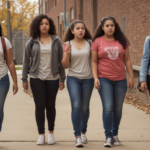Book Link 16 Statistical Thinking
<back next> — index
At the end of this lesson, you should be able to:
-
- Understand the main parts of a statistical investigation.
- Explain what p-values and confidence intervals are used for in statistics.
- Understand how random sampling helps us make conclusions about a whole group.
- Explain how random assignment helps us figure out cause-and-effect relationships.
- Discuss different statistical studies.
Main parts of a psychological statistical investigation.
1. Formulate a research question or hypothesis
2. Design the study and select the appropriate research methods
3. Collect and prepare the data
4. Analyze the data using statistical techniques
5. Draw conclusions based on the results
6. Report the findings in a clear and understandable manner
Explaining p-values in a psychological statistics investigation
In psychology, when researchers want to find out if there’s a real difference or relationship between things, they use something called p-values. A p-value is a way to figure out if the results of a study are just due to chance or if they’re actually meaningful.


Imagine you have two groups of people, one that gets a special memory-boosting drink and another that doesn’t. After the study, you find that the group that drank the special drink performed better on memory tests. The p-value helps you figure out if this difference is likely due to the drink or just a random fluke.
Another example is if you’re trying to see if there’s a connection between how much time students spend studying and their grades. A low p-value would suggest that the amount of time spent studying is related to the grades, while a high p-value would suggest that there’s no real connection.
What’s This About Random Sampling?
Random sampling is a method used in psychology investigation where every member of a population has an equal chance of being selected to participate in a study. We use random sampling to ensure that the sample is representative of the larger population, which allows us to make generalizations about the population based on the findings from the sample.
Two examples that young adults might identify with are:
1. If you wanted to find out how many students in your school prefer watching movies at home over going to the theater, you could use random sampling to select a group of students to survey.
2. If you were studying the eating habits of young adults in your city, you might use random sampling to select participants for your study to ensure that your findings could be applied to the entire young adult population in the city.
Random Assignment and Cause-and-Effect
Random assignment helps us determine cause-and-effect relationships by ensuring that participants have an equal chance of being assigned to different groups in an experiment. This minimizes the potential for bias and allows researchers to attribute any differences observed between the groups to the manipulated variable, rather than to pre-existing differences between the participants.
By using random assignment, researchers can be more confident that any observed effects are actually due to the manipulation of the independent variable, helping to establish a cause-and-effect relationship.
Real Life Studies About Young People
1. The Monitoring the Future study, which tracks trends in substance use among American adolescents and young adults.

The Monitoring the Future study is an ongoing study that has been conducted for several decades. The most recent data available is from 2020, and it found that there were significant decreases in the use of alcohol, cigarettes, and illicit drugs among adolescents and young adults.
However, there were increases in vaping and marijuana use among certain age groups. The study also provides valuable insights into the factors influencing substance use behaviors among young people.
2. The Youth Risk Behavior Surveillance System, which examines health behaviors that contribute to leading causes of death, disability, and social problems among youth and adults in the United States.

The Youth Risk Behavior Surveillance System is an ongoing study that provides data on health behaviors among high school students. The most recent data is from 2019. Some of the key findings include a decrease in the prevalence of electronic vapor product use but an increase in the prevalence of obesity.
The study also highlights the continued challenges of behaviors such as insufficient sleep, physical inactivity, and mental health struggles among young people in the United States.
3. The National Longitudinal Study of Adolescent to Adult Health, which investigates the causes of health-related behaviors of adolescents and their outcomes in young adulthood.
The National Longitudinal Study of Adolescent to Adult Health is an ongoing study that began in 1994 and has followed participants into adulthood. The most recent data from this study has provided insights into various health-related behaviors of adolescents and their outcomes in young adulthood.

Some key findings include the impact of family and peer relationships on health behaviors, as well as the long-term effects of adolescent behaviors on adult health outcomes.
The study continues to provide valuable information on the factors that influence the health trajectories of young people as they transition into adulthood.
Summary
In psychology, researchers ask questions, collect data, and analyze it to draw conclusions. They use p-values to see if results are meaningful. Random sampling helps get a fair group for the study, while random assignment helps find cause-and-effect relationships. Real-life studies, like Monitoring the Future and the Youth Risk Behavior Surveillance System, tell us about substance use and health behaviors in young people in the United States.